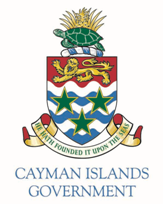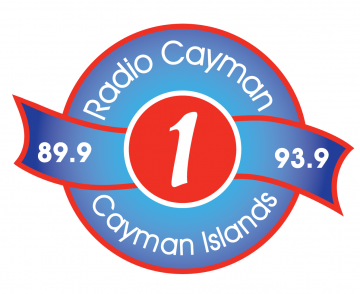News
Public Health Advisory - Monkeypox Cases Increase Overseas, Cayman to be Aware

New cases of human monkeypox have been found in several European countries, the United States, Canada and Australia. No cases have been detected in the Caribbean to date.
Monkeypox is a viral infection usually associated with travel to West and Central Africa, where the virus is endemic. It is usually a mild self-limiting illness, spread by contact with wild rodents, primates or dogs in the endemic areas or very close contact with someone with monkeypox. Most people recover within a few weeks.
The United Kingdom has confirmed 20 cases so far, with the first case being identified in a traveler returning from Nigeria on 7 May. Latest cases, have no travel connection to West Africa or Central Africa or to previous cases. The UK Health Security Agency (UK HSA) is working closely with the National Health Services (NHS) and other stakeholders to urgently investigate where and how recent confirmed monkeypox cases were acquired and how they may be linked to each other.
Dr Susan Hopkins, Chief Medical Adviser, UKHSA, said that “these latest cases, together with reports of cases in countries across Europe, confirms our initial concerns that there could be spread of monkeypox within our communities”.
The UK HSA is also particularly urging men who are gay and bisexual to be aware of any unusual rashes or lesions and to contact a sexual health service without delay if they have concerns.
Cases have been found in Portugal, with five confirmed cases and several more under investigation, and Spain is currently testing 24 potential cases. All five Portuguese patients are male. Italy, Sweden, Belgium, France and Austria have also recently announced that they have identified cases. The USA has reported one case so far, with no link to travel to Africa, while Canada and Australia are investigating a number of suspect cases.
Symptoms
Initial symptoms of monkeypox include fever, headache, muscle aches, backache, swollen lymph nodes, chills and exhaustion. A rash can develop, often beginning on the face, then spreading to other parts of the body including the genitals.
The rash changes and goes through different stages, and can look like chickenpox or syphilis, before finally forming a scab, which later falls off.
Mortality
Mortality is around one percent depending on which of the 2 types of monkeypox viruses is involved (with the clade from the Congo Basin being more dangerous than that from West Africa)
Background of Outbreaks
Human monkeypox was first identified in humans in 1970 in the Democratic Republic of the Congo (then known as Zaire) in a 9-year-old boy in a region where smallpox had been eliminated in 1968. Since then, most cases have been reported from rural, rainforest regions of the Congo Basin, particularly in the Democratic Republic of the Congo, where it is considered to be endemic.
Since 1970, human cases of monkeypox have been reported from 11 African countries – Benin, Cameroon, the Central African Republic, the Democratic Republic of the Congo, Gabon, Ivory Coast, Liberia, Nigeria, the Republic of the Congo, Sierra Leone, and South Sudan. In 2017 Nigeria experienced the largest documented outbreak, 40 years after the last confirmed case. The true burden of monkeypox is not known. For example, in 1996–97, a major monkeypox outbreak was suspected in the Democratic Republic of Congo with, however, a lower case fatality and a higher attack rate than usual. Some patient samples tested positive for varicella virus and some contained both varicella and monkeypox viruses. Concurrent outbreaks of chickenpox and monkeypox could explain a change in transmission dynamics in this case.
The virus has been exported from Africa a few times. In the spring of 2003, monkeypox cases were confirmed in the United States of America. Most patients were reported to have had close contact with pet prairie dogs that were infected by African rodents that had been imported into the country from Ghana. Recently, monkeypox was carried to Israel in September 2018, to the United Kingdom in September 2018 and December 2019 and to Singapore in May 2019 by travellers from Nigeria who fell ill with monkeypox after arrival. A health worker was infected and became ill.
Two distinct genetic clades of the virus have been identified – the Congo Basin and the West African clades – with the former found to be more virulent and transmissible. The geographical division between the two clades is thought to be in Cameroon as this is the only country where both monkeypox virus clades were detected.
Risk of transmission
The disease requires prolonged, close contacts with a patient (especially with patient’s body secretions, including secretions from the skin lesions). It can transmit from animals to humans when an infected animal - such as a rodent or a primate - bites or scratches a person, in areas (such as West and Central Africa) where the virus is present in animals. Humans can also be infected when hunting wild animals or preparing bush meat for consumption.
The disease can also spread from person to person via large respiratory droplets in the air, but they cannot travel more than a few feet, so two people would need to have prolonged close contact.
Threat to the Cayman Islands
“The risk to Cayman Islands is only hypothetical at this stage and the purpose of this note is to provide concise, factual information to health professionals and the public alike, while raising awareness about signs and symptoms”, said interim Chief Medical Officer Dr Autilia Newton. “Awareness, by medical professionals and the community, will enable prompt recognition of cases, should any appear in the Cayman Islands”, she added.
Any suspected case should be reported promptly to Public Health so that timely infection control measures can be taken. Persons can contact Public Health by phone at 244-2889 or 244-2621; or by emailing info@hsa.ky.












